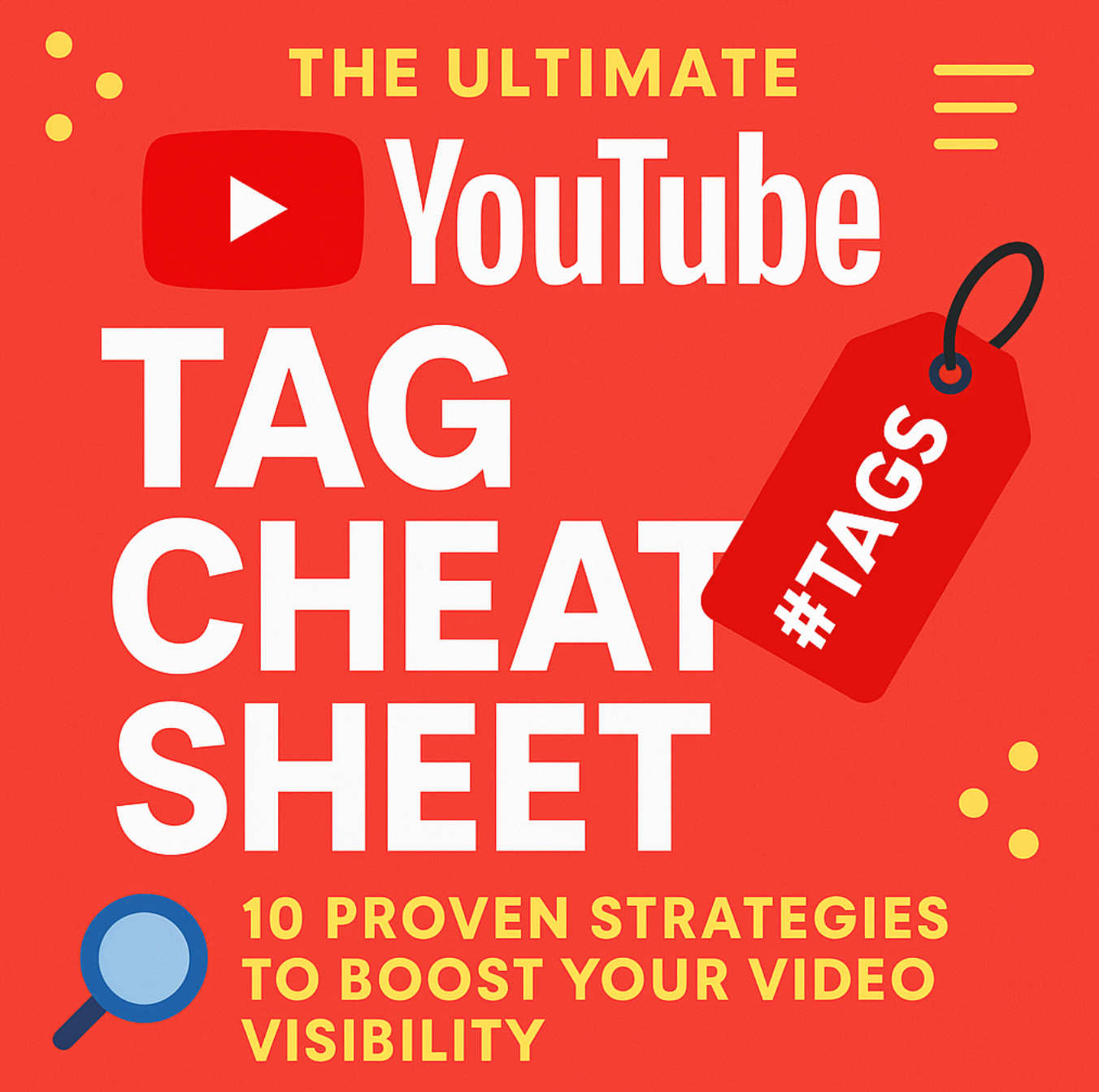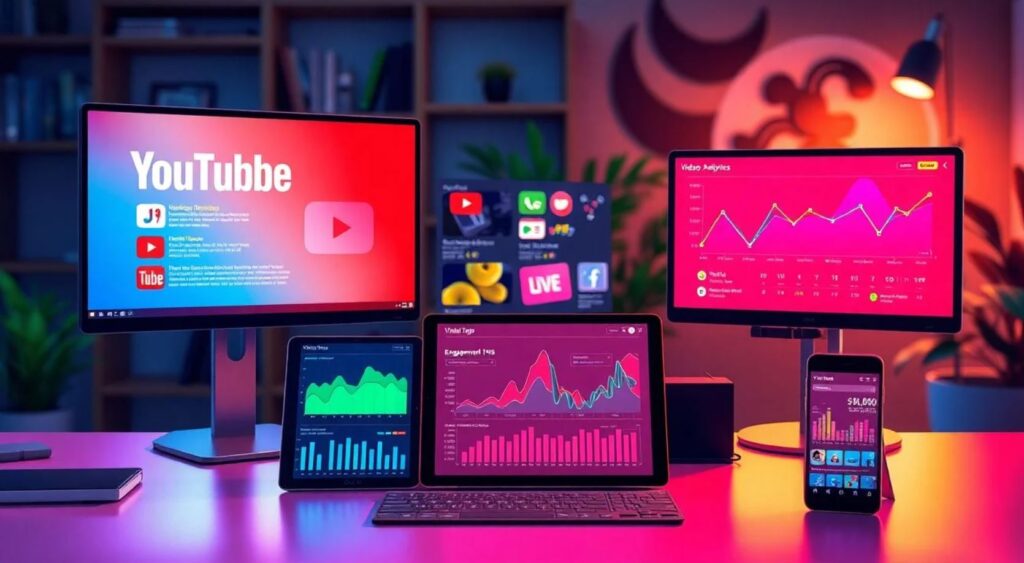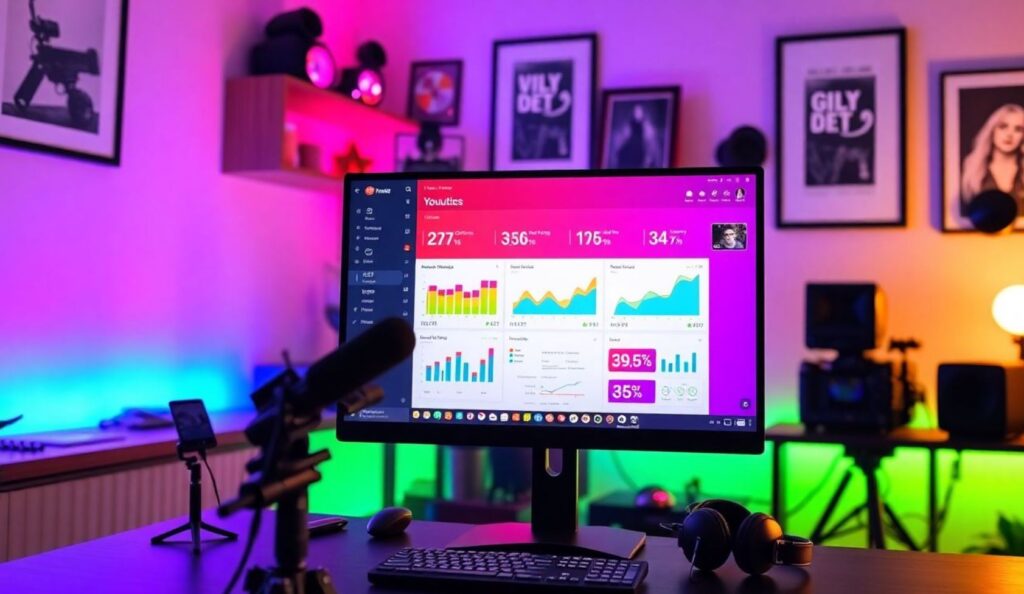Are your YouTube videos lost in the crowd? Want more people to see what you create? YouTube tags are your secret weapon. They tell YouTube what your video is about so it can show it to the right viewers. Ready to unlock a surge in views? This guide reveals ten tag strategies that really work.
Understanding YouTube Tags: The Foundation of Visibility
Let’s discuss tags. This is the key to being seen on YouTube. Without them, it’s like your video is invisible.
What are YouTube Tags and Why Do They Matter?
YouTube tags are keywords you add to your videos. Think of them as labels. They’re different from the words in your title or description. Tags help YouTube understand what your video covers. This helps the platform show your content to people who are looking for it. Don’t underestimate these. They can boost your view count significantly.
Debunking Common YouTube Tag Myths
Some people think stuffing tags with tons of words helps. That’s not true! Using irrelevant tags can hurt your video. YouTube might penalize you. Focus on quality and relevance. Make sure your tags accurately describe your content.
Strategy 1: Keyword Research for YouTube Tags
Smart keyword research is crucial. It’s the base of successful tags. This helps you find the terms that people actually search for.
Utilizing the YouTube Search Bar for Tag Ideas
YouTube’s search bar is a goldmine. Start typing a topic and see what it suggests. These suggestions are based on real searches. Use these as tag ideas. For example, if you’re doing a video on “easy baking,” type that. YouTube might suggest “easy baking recipes” or “easy baking for beginners.”
Leveraging Keyword Research Tools for YouTube
Want to go deeper? Tools like Google Keyword Planner can help. They show you search volume and other keyword ideas. Other options include Ahrefs, TubeBuddy, and VidIQ. These tools can analyze competitor tags. They find related keywords.
Strategy 2: Competitive Analysis: Spying on Your Rivals
See what works. Check what tags top YouTubers in your field use. It’s a smart way to find new ideas.
Identifying Top-Performing Videos in Your Niche
Find the popular videos. Search for your main keywords. Which videos rank highest? These are your targets for tag inspiration. Look for videos with high view counts and engagement. They’re doing something right!
Extracting and Analyzing Competitor Tags
Use browser extensions. They show the tags that other creators use. Analyze these tags. Are they relevant to your video? Are there any you hadn’t thought of? Do the tags seem to be effective?
Don’t copy everything blindly. Focus on tags that make sense for your content.
Strategy 3: Long-Tail Keywords: Targeting Niche Audiences
Go narrow and specific. Long-tail keywords can attract a more focused crowd. Those viewers are more likely to engage.
What are Long-Tail Keywords and Why are They Effective?
Long-tail keywords are longer, more specific phrases. Instead of “coffee,” think “best coffee beans for French press.” Less people search for these terms, so there’s less competition. Those searching for them usually know what they want. This often leads to higher engagement and conversion.
Finding Long-Tail Keyword Opportunities
Address specific questions. What problems does your video solve? Turn these questions into long-tail keywords. For example, if your video is about fixing a leaky faucet, use tags like:
- “how to repair a leaky faucet”
- “fix leaky faucet diy”
- “leaky faucet repair cost”
Strategy 4: Branded Keywords: Building Your Brand Authority
Promote yourself. Include branded keywords in your tags. It’s smart for making your brand better known.
The Power of Branded Keywords
Branded keywords help people find your content easily. It helps build brand recognition. When people search for your brand, you want your videos to show up! This reinforces your authority and builds trust.
How to Incorporate Branded Keywords Effectively
Include your brand name. Use variations of your brand name. If you sell products, add those names too. For example, if your channel is “Awesome Gadgets,” use tags like:
- “Awesome Gadgets”
- “AwesomeGadgets”
- “Awesome Gadgets reviews”
- “Awesome Gadgets product name”
Strategy 5: Category-Specific Keywords: Enhancing Discoverability
Help YouTube categorize. Adding category-specific keywords gives more details on what your video is generally about.
Identifying Relevant Categories for Your Content
Think about the main categories for your video. Is it educational? Is it entertainment? Maybe it’s a how-to video. Choose keywords that reflect these categories. Be as specific as possible.
Including Category-Specific Terms in Your Tags
Add keywords related to your video’s topic. If you’re posting a makeup tutorial, include tags like:
- “makeup tutorial”
- “beauty tips”
- “cosmetics”
- “eye makeup”
Strategy 6: Tag Order Matters (Slightly): Prioritizing Your Focus Keywords
Order matters a bit. Put your most important words first. This might help the algorithm figure out what’s most important.
Understanding the Algorithm’s Tag Prioritization
The theory is that the first few tags get more attention. No one knows for sure. What’s really important is that you make sure the tags are relevant. Don’t focus too much on the order.
Structuring Your Tags for Optimal Impact
Put your main keywords first. Follow with related terms. Finish with long-tail keywords. This creates a balanced approach.
Strategy 7: Tag Variety: Cast a Wider Net
Mix it up. Use broad and specific tags so more people can discover the content you make.
Balancing Broad and Specific Keywords
Broad keywords reach more people. But specific ones get a more engaged audience. If your video is about “dog training,” broad tags might include “dogs” or “pets.” Specific tags could be “puppy training tips” or “dog training for beginners.”
Expanding Your Tag Vocabulary
Use synonyms. Find similar terms. Don’t use the same word over and over. Instead of always using “recipe,” try “cooking guide” or “food tutorial.”
Strategy 8: Using Misspellings and Common Errors
Consider common mistakes. Sometimes, people misspell words when they search. Adding misspellings can help you capture those viewers.
Tapping Into Common Search Errors
People make typos. If a word is often misspelled, think about including it. This can bring in more views.
Ethical Considerations and Best Practices
Using misspellings can be a grey area. But sometimes, it can make sense. It’s more common for industries that have lots of unusual words like Pharmaceuticals. But be careful. Don’t use offensive misspellings. Always put user experience first.
Strategy 9: Regularly Update Your Tags
Keep things fresh. Change your tags to match the newest happenings and search behaviors.
The Importance of Tag Audits
Tags can become useless. Trends change. Search habits evolve. Review your tags regularly. Make sure they’re still relevant.
Identifying Underperforming Tags
Check your video analytics. Which tags bring in traffic? Which ones don’t? Replace the bad tags. Focus on better options.
Strategy 10: YouTube’s Autogenerated Tags: Use them to your advantage.
Take advantage of AI. YouTube now uses AI to generate tags. These autogenerated tags can give you insights and direction.
How YouTube’s AI generates tags.
YouTube’s AI looks at your video’s title. It looks at the description. It listens to what you say in the video. It even analyzes the visuals. Then it suggests tags based on this data.
Use the autogenerated tags to your advantage.
Review the tags YouTube suggests. Do they accurately describe your video? If so, keep them. If not, remove them and add your own. You can influence these suggestions. Optimize your titles, descriptions, and video content. This will give YouTube’s AI a better understanding of your video.
Conclusion
YouTube tags are a powerful tool. Using these ten strategies will make it easier for people to see your videos. Try them. Review them and adjust. More views are coming.




